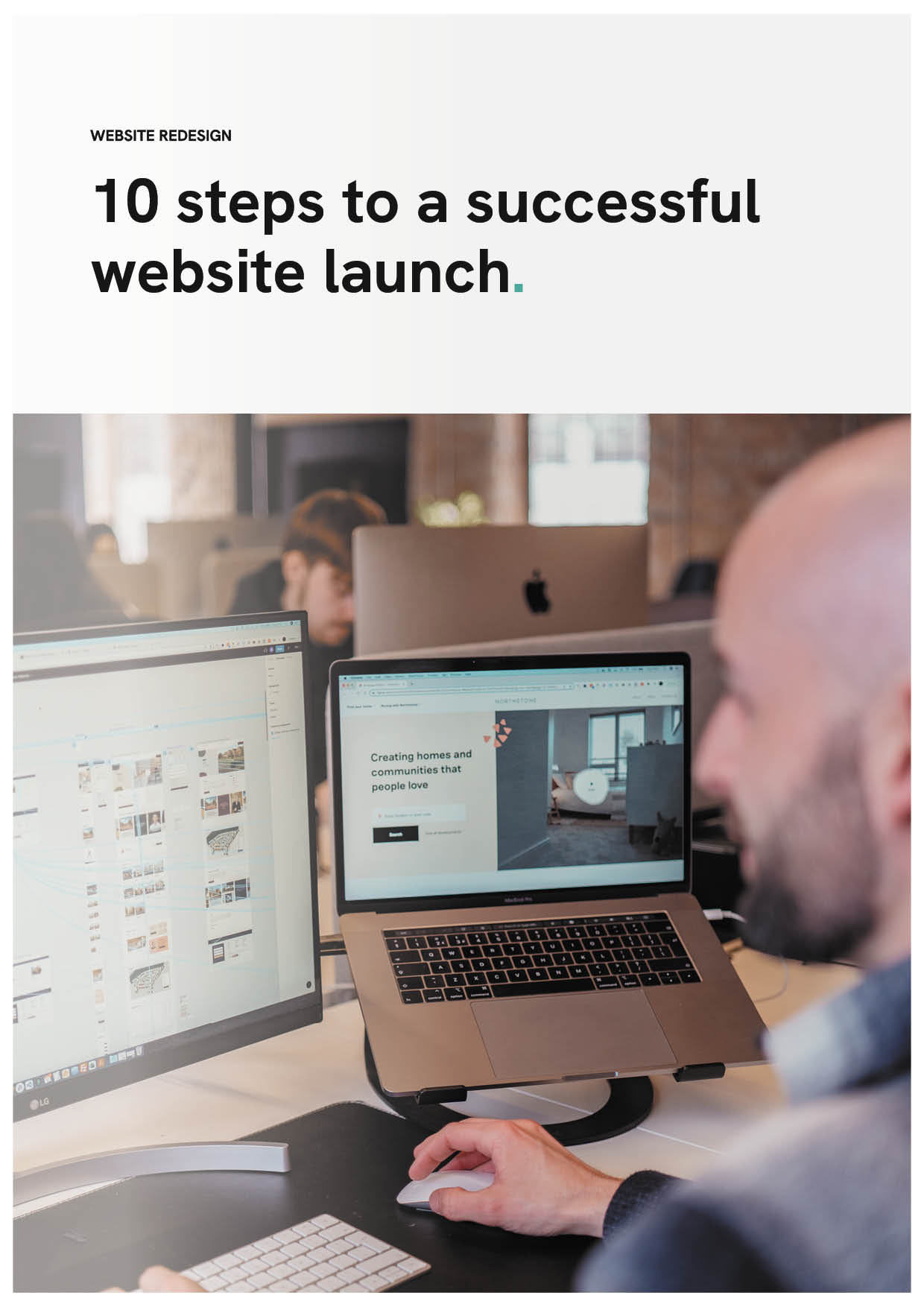B2B social media is still human to human
Social media for manufacturing businesses is no longer about occasional updates or generic content. It’s become part of a critical strategy for strengthening their brand position and making them more visible.
Social media is a space to build trust, share information about an organisation’s culture and engage with real people. These include decision makers, future and current long-term customers, or team members, and ultimately increase conversions in sales.
At Red-Fern, as a specialist manufacturing social media agency, we’ve seen how brands that bring their people and values into the spotlight experience stronger engagement and long-term growth.
Manufacturing businesses typically operate in the B2B space by selling components, machinery, or finished goods to other businesses rather than directly to consumers. Their clients are often distributors, wholesalers, retailers, or even different manufacturers who rely on their products as part of a broader process.
This makes the sales cycle longer, more complex, and highly relationship-driven, often involving multiple stakeholders and large-scale contracts. That’s why building trust and visibility early on, through social media and humanised content, can be crucial in long-term success.
No time to read this article, why not listen to the audio conversation.
Why social media for manufacturing matters
Finding the best platforms will make a huge difference for a brand. Understanding how platforms work and why they matter is key to a social media strategy.
Smart manufacturing brands use social media not just to promote but also to connect, educate, and lead conversations. It’s about showing up purposefully while being consistent and meaningful, no matter where your audience is in their browsing or buying journey.
Utilising the best platforms for your brand can make all the difference to the customer journey and, ultimately, who they choose to do business with.
Key benefits to note:
- Build brand awareness: platforms like LinkedIn, Facebook, and Instagram allow manufacturers to showcase products, processes, and expertise, making it easier to reach audiences and grow their profile.
- Lead generation: social media helps manufacturers connect directly with industry professionals and decision-makers, building relationships and leading to sales opportunities.
- Customer engagement: engaging, commenting, and sharing content, as well as hosting webinars and live demos, can also build trust and brand loyalty.
- Website traffic: content can include calls-to-action (CTA) directing users to specific pages on an organisation’s website, boosting conversions.
- Building and managing reputation: trust and credibility are established by sharing customer testimonials, case studies and thought leadership content.
Navigating awareness and intent on social platforms
Not every platform fits neatly into a box. Channels, like LinkedIn or YouTube, serve both awareness and intent purposes, depending on how they’re used.
For example, a behind-the-scenes YouTube video might introduce your brand to someone new (awareness), while a how-to product demo might appear in search results for someone actively looking for a solution (intent).

Social platforms are also evolving. Features like keyword search, hashtags, and topic filters mean users can now discover highly relevant content even if they aren’t directly following your brand. This creates opportunities to position yourself as visible and valuable at multiple stages of the buyer journey.
That’s why humanising your content matters – sharing real stories, showing real people, offering insight and educating people. It keeps a brand relevant and relatable in the awareness stage while building enough trust that when the intent to invest kicks in, yours is the name they remember.
Different manufacturing brands will have their unique target audience, so it pays to do some market research to find out where that target audience is likely to be and invest time and effort in them.
Key components between awareness and intent strategies:
Awareness Channels
These are platforms or strategies are used to introduce your brand to new audiences. People using these platforms may not be actively looking for your solution yet – they’re simply discovering, scrolling, and learning.
Examples:
- LinkedIn posts – the best platform for manufacturing companies. Great for B2B connections, lead generation – and recruitment. It attracts industry professionals and senior decision-makers already there. Content such as technical articles, product specifications, and industry trends do well here.
- Facebook – good for showcasing company culture, tours and product demonstrations.
- Instagram – is particularly suited for visual content, such as talking about machinery and production processes and finished products with images and videos.
- YouTube videos – perfect for creating detailed demonstrations and answering customer enquiries. Also, it has great SEO value in Google searches.
Their job is to build familiarity and trust. Think of them as the digital equivalent of meeting someone at a trade show – not a sales pitch, more an introduction.
Intent Channels
These are platforms where people show clear interest or intent to find a solution. They’re either researching or ready to buy and looking for expertise.
Examples:
- Google Search (especially paid search and SEO) – when someone types “CNC machining services UK” into Google, they’re actively looking for a solution.
- Review sites or comparison platforms – buyers visit these to weigh up options, meaning they’re close to deciding.
- LinkedIn lead generation forms or whitepaper downloads – offering valuable content like a product guide or industry report in exchange for contact details helps you identify and nurture high-intent leads.
- Targeted remarketing campaigns – with PPC (pay-per-click). These ads follow people who’ve already visited your site or engaged with your content, keeping you at the top of their minds and encouraging them to return and take action.
These channels help capture leads or convert interest into action – essentially picking up the conversation when someone is further down the buying journey.
Why Humanising Your Brand is important
Manufacturing businesses can be perceived as faceless or purely functional. However, your team, story, and values are your biggest assets in standing out online.
While some manufacturing brands often focus on technical capabilities, they also miss emotional connections with customers. Explain how humanising a brand differentiates it from its competitors, especially in a competitive marketplace. Highlight the role of building trust in building and growing customer retention and lead generation.
People will always do business with people they know, like and trust. People want to connect with people. Buyers want to know who they’re working with. Potential recruits wish to feel part of something bigger, with great incentives and community. Humanising your brand builds credibility, emotional connection, and loyalty – and in a competitive marketplace, that connection can be the deciding factor.
Strategies to ensure your manufacturing brand is more human
Here’s how manufacturers can use social platforms to bring more humanity – and authenticity – into their marketing.
1. Tell people about your team
Start with your people. Share “Meet the Team” posts, milestones, or behind-the-scenes moments to show the human side of your business. Whether it’s a work anniversary, a day on the shop floor, or a light-hearted office chat, this content adds warmth and personality to your brand. Just be sure to get permission before posting, respect what each team member is comfortable sharing, and get creative with illustrations, quotes, or role highlights.
It’ll make your brand more relatable, giving future clients and recruits a glimpse of the people who make your business work.
2. Tell real stories
Every product you make solves a problem for someone. Tell that story. Feature customer testimonials. Share case studies. Post photos or videos of your products in action. When you connect your offering to real-world outcomes, you shift from being a manufacturer to a solution provider.
You can also tell the story of your business—its origins, values, growth, and milestones. Storytelling can create emotional connections and build trust.
3. Make content that educates
Put together posts telling your audience how products are manufactured, what the latest industry trends are, and the benefits of your products or services. Keep it simple, make it interesting, use conversational language and avoid jargon when interacting on social media.
Be prompt when responding to comments and enquiries to nurture a two-way conversation.
4. Let your customers do the talking
Encourage your customers to tag you in posts or share photos of your product in use. Reshare their content and celebrate their successes.
This user-generated content is powerful social proof – it shows people trust you and that you deliver real-world results. You can also conduct polls or surveys to collect feedback, which shows you value customer opinions and feedback.
5. Use video to bring your brand to life
Social media loves video – and so does your audience. Video is one of the best tools for breaking down complex processes, highlighting product benefits, or capturing the essence of a business’s culture in action.
You don’t need an entire film crew. Even short, authentic clips filmed on a phone can go a long way – especially on platforms like Instagram, Facebook, or LinkedIn. Think of product walkthroughs, “how it’s made” reels, behind-the-scenes content, or interviews with team members.
6. Track what’s working and what isn’t
By tracking metrics – comments, likes, and shares – you can see what’s working and tweak social media to shape and fit your content strategy.
Be diverse by experimenting with different types of social media content, such as LinkedIn posts, Instagram stories, short videos, or photo carousels. That way, you’ll keep your audience engaged.
By incorporating some simple strategies, sharing your teams’ personalities, and getting feedback from customers, you can sharpen your brand’s personality and deepen engagement with your community.
Ready to build stronger connections with your audience?
At Red-Fern, we help manufacturing brands stand out by turning technical expertise into human stories. Whether you’re just getting started with social or looking to increase your strategy, our team can guide you in building a social presence that builds trust, drives engagement, and supports long-term growth. Book a discovery call today and let’s explore how your brand can lead the conversation on social media..


